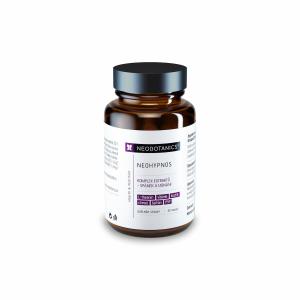
Overcome PMS with the Premenstrual Syndrome Test

Premenstrual Syndrome Test as a Path to Better Understanding PMS and Your Own Body
Premenstrual Syndrome (PMS) is a term we often hear, and many women are well acquainted with it from their own experience. This complex syndrome includes a wide range of physical, emotional, and psychological symptoms that appear before the start of the menstrual cycle. Despite being a common issue, many women don't know that there are ways to help themselves, such as using a premenstrual syndrome test. This test helps reveal what is happening in the body before menstruation and allows for creating an effective plan to alleviate these discomforts.
How to Recognize Premenstrual Syndrome?
PMS manifests differently depending on the woman and her body. Some women experience only mild mood changes or slight physical symptoms, while others may suffer from severe pain, extreme fatigue, or anxiety. The most common symptoms of PMS include:
- Mood swings – increased irritability, anxiety, depression, or crying without an apparent reason.
- Fatigue – a feeling of exhaustion that doesn't go away even after sufficient sleep.
- Physical discomfort – headaches, breast tenderness, bloating, abdominal pain, or muscle aches.
- Reduced ability to concentrate – difficulty focusing and lower productivity at work or school.
- Excessive appetite – especially for sweet or salty foods.
These symptoms can vary in duration and intensity. For some women, they start up to two weeks before menstruation begins and subside with its arrival, while for others, they may appear just a few days beforehand. A test for premenstrual syndrome is one of the tools to identify these symptoms, track their frequency, and determine how PMS affects daily life.
What is a Premenstrual Syndrome Test and How Does it Work?
A premenstrual syndrome test is a method that helps better understand the physical and psychological changes before menstruation. In practice, it involves tracking and recording symptoms during the menstrual cycle. This test can take the form of a diary, a mobile phone app, or a questionnaire where a woman describes how she feels and what symptoms she observes.
A crucial part of the premenstrual syndrome test is consistency in monitoring. Every day, the woman records her symptoms, their intensity, and how they affect her daily activities. It is important to track how long the symptoms last and when they start – these data are key to identifying whether it is truly PMS or if the symptoms could be caused by other health issues.
How Can the Premenstrual Syndrome Test Help You?
Why is it important to take a premenstrual syndrome test? This test is not only a useful tool for women who want to better understand what is happening with their bodies before menstruation but also an important diagnostic tool for doctors. The following points show how the test can help you:
-
Identifying True Triggers: Accurate tracking of symptoms allows you to identify specific factors that affect the intensity of PMS. This may include, for example, stress, diet, or lack of sleep.
-
Improving Quality of Life: When you better understand your body, you can better plan your daily schedule. If you know when PMS will start and what symptoms usually appear, you can prepare and adjust your activities to mitigate its impact on your life.
-
Individualized Symptom Management Plan: The premenstrual syndrome test provides important information about which strategies might work in alleviating symptoms. For example, some women find that regular exercise or dietary changes can significantly reduce the intensity of PMS symptoms.
-
Diagnosis of Other Health Problems: Accurate symptom tracking can also help reveal other health issues that may be mistaken for PMS. If symptoms last longer or are more intense than usual, it might mean that there is another health condition that requires medical examination.
What to Do if the Premenstrual Syndrome Test Reveals Severe Symptoms?
If the premenstrual syndrome test shows that your symptoms are very intense and significantly affect your quality of life, it is important not to hesitate and consult a specialist. A doctor can help not only with an accurate diagnosis but also with proposing effective treatment. In some cases, hormonal therapy may be necessary to balance hormone levels or recommend other treatment methods.
For many women, however, it is possible to manage PMS symptoms with lifestyle changes. Here are some general tips that may help:
- Regular exercise: Physical activity helps release endorphins, which improve mood and reduce stress.
- Healthy diet: A balanced diet rich in nutrients, such as vitamins B6, magnesium, and omega-3 fatty acids, can contribute to better hormonal balance.
- Sufficient sleep: Quality sleep is crucial for body recovery and stress management.
- Reducing caffeine and alcohol: Caffeine and alcohol can worsen some PMS symptoms, such as mood swings or headaches.
Try our natural products
Premenstrual Syndrome Test as a Path to Better Health
Recording symptoms from the premenstrual syndrome test can serve not only to understand your own cycle but also as a valuable tool for doctors in making a diagnosis. By regularly monitoring and analyzing what is happening in your body before menstruation, you can better control your health and find ways to alleviate unpleasant symptoms.
Every woman should have the opportunity to understand her body and know how it reacts to hormonal changes. The premenstrual syndrome test is a key tool that provides you with better control over your menstrual cycle and helps you manage PMS more effectively.



